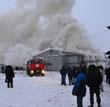Автор Robert Niles , опубликовано здесь. Рекомендую начинающим (и не только) журналистам. Машинного перевода достаточно, чтобы понять смысл.
, опубликовано здесь. Рекомендую начинающим (и не только) журналистам. Машинного перевода достаточно, чтобы понять смысл.
Wisdom is the ability to see your life and career not simply as a line going forward from wherever point you are, but as an arc that extends from the past into the future. That’s why I believe it is important to teach online journalism students about the history and development of the Internet and for online news professionals to remember the early days of their craft. (It’s also why I find books like Malcolm Gladwell’s «Outliers» so interesting.)
I’ve written about how legal precedents shaped the thinking of early online news managers. Today, I’d like to suggest that early online publishing technology affected industry thinking in profound, and, ultimately, tragic, ways as well.
For those of you who weren’t working on a newspaper website around 1996, let me take you on a trip into the pensieve (or, down memory lane, for those of you overdosed on Harry Potter references this week). I started on the Rocky Mountain News website in November 1996, and was the only person at the paper updating and maintaining the news side of the website. Every morning, I came in around 5 am, selected a couple dozen stories from the newspaper, then called them up on the paper’s ATEX terminals. One by one, I sent a copy of each story to a queue we’d created which interfaced with the Pantheon Bridge program on a Windows NT box in the paper’s computer room.
Pantheon was a set of programs used by many newspapers at the time to port copy from the papers’ publishing systems into flat HTML files. One by one, I’d call up each story in Pantheon, to make sure that it had come over and then to assign the story to the appropriate section in which it would appear on the website.
Pantheon built index pages for each section, in addition to create an HTML page for each article. To do those things, it had to read the head, deck, byline, publishing date and story copy into fields in an Access (!) database, from which it would push each article into page templates. (Heaven forbid that anyone on the copy desk had decided to use a different way to mark up a head or byline, because that would break the parsing process.)
I pulled whatever photos I needed from the paper’s photo server (on a Mac) and Photoshopped them to the specs I needed. After that, I fired up Notepad to hand-code the paper’s front page.
Finally, I would use two FTP programs to manually transfer each JPG image and story and index file to the Rocky’s webservers, then at Scripps headquarters in Cincinnati (Fetch for the images from the Mac, and WS_FTP for the HTML files from the Wintel box).
When I moved to the Los Angeles Times website in January 2000, I was delighted to find that the Times staff (which numbered in the dozens) had written a series of scripts to move every article and some images from the paper’s print publishing systems onto the Web. But human staff needed to check the feed every morning, to see that it had come through uncorrupted. Several mornings, it hadn’t, and tech staff needed to debug and restart the feed.
Still, Times online editors hard-coded most top stories in HTML, manually editing images in Photoshop and building index pages by hand.
By today’s standards, the work was ugly and mundane. But it had to be done. Online readers wanted to see the newspaper online. They wanted the freedom to read the paper on their computers at work, so that they could hit the road from home a few minutes earlier each morning.
On the advertising side, automated scripts at both papers helped bring classified ads online. And at the Rocky, inside sales reps «upsold» classified advertisers to put their ads online. At the Rocky and at many papers, that incremental revenue from upsold classified ads paid for the online production staff, in both editorial and advertising.
Why does this matter now? Shouldn’t those of us who remain at newspaper websites just be thankful that we don’t have to go through that hassle to get our sites online everyday?
Let’s remember that arc, though, and how what happened then has shaped what is happening in the industry now.
I believe that the hoops we had to jump through to get newspaper stories online influenced newspaper managers’ perceptions about the difficulty of online publishing. Sure, many of us had personal websites and knew how it easy it was to slap together a page in HTML (or by using an early page editor). But senior newspaper managers, the people plotting the business future of the industry, saw online publishing only through the prism of getting their content from their proprietary print systems through programs like Pantheon and onto the Web. That led many of them to see online publishing as something difficult, creating a high barrier of entry for potential competitors.
If newspapers were worried, it was about big-money rivals such as Microsoft’s Sidewalk. Individually published websites and blogs, when they started to appear, weren’t n anyone’s radar as competition. Managers saw online publishing as demanding complicated, expensive, technical solutions.
So online staff were put to that task, not to noodling around with online-only content, independently conceived and produced. Today, we can look back and see the opportunity missed. What if the Bay Area newspapers had developed a free online classified service, and attempted to upsell some of those free advertisers into a paid print ad – the opposite model of what so many newspapers pursued? If they had, perhaps there wouldn’t have been a Craigslist, and the future of the news industry could have developed along a radically different arc.
What if more managers had paid attention to the ease with which so many of us were cranking out our personal websites and charged us, on company time, to develop tools to allow all newspaper readers to do the same? Can you image what could have happened had newspapers developed and controlled the first blogging tools?
What if newspaper ad sales teams sold ads into those bloggers’ webpages, before Google got into that game with AdSense? What would the industry’s market share look like today?
But, of course, none of those things happened. Because, I suggest, 1990s newspaper managers looked at us, toiling with the likes of Pantheon and hacked-together Perl scripts, and concluded that online publishing was complex, frustrating and difficult. So by the time that online jockeys who didn’t have to struggle getting newspaper copy online had developed tools like Craigslist, Blogger and AdWords, the competition they unleashed overwhelmed the industry before newspaper managers could change their thinking.
 Минобрнауки РФ будет поддерживать развитие дистанционных форм образования - Каганов
Минобрнауки РФ будет поддерживать развитие дистанционных форм образования - Каганов Пять инструментов, которые журналисты могут использовать для потоковой трансляции видео
Пять инструментов, которые журналисты могут использовать для потоковой трансляции видео АНРИ-Медиа: IX Саммит региональных издателей
АНРИ-Медиа: IX Саммит региональных издателей Марина Литвинова : Про архитектуру системы дистанционного обучения
Марина Литвинова : Про архитектуру системы дистанционного обучения Почему стоит геймифицировать ваши электронные курсы
Почему стоит геймифицировать ваши электронные курсы Анонсы ближайших образовательных порограмм АНРИ-Медиа
Анонсы ближайших образовательных порограмм АНРИ-Медиа Тренинг Класа Тура "Креатив в журналистике"
Тренинг Класа Тура "Креатив в журналистике" АНРИ: III ежегодный Рекламно-правовой Форум «Правовые основы и стратегии развития региональных СМИ»
АНРИ: III ежегодный Рекламно-правовой Форум «Правовые основы и стратегии развития региональных СМИ» АНРИ-Медиа: Афиша на октябрь 2014 года
АНРИ-Медиа: Афиша на октябрь 2014 года Эхо недели - Железногорск: Пожар, о котором молчат
Эхо недели - Железногорск: Пожар, о котором молчат Эхо недели: В Железногорске расследуется дача взятки главному архитектору
Эхо недели: В Железногорске расследуется дача взятки главному архитектору Эхо недели - Железногорск: жители протестуют против стройки во дворе
Эхо недели - Железногорск: жители протестуют против стройки во дворе Эхо недели - Железногорск: расследуется дача взятки главному архитектору
Эхо недели - Железногорск: расследуется дача взятки главному архитектору Железногорск: сгорело общежитие МГОКа - трое рабочих погибли
Железногорск: сгорело общежитие МГОКа - трое рабочих погибли
 ← Подпишись на RSS!
← Что такое RSS?
← Подпишись на RSS!
← Что такое RSS?
 ← E-mail рассылка
← E-mail рассылка